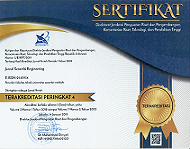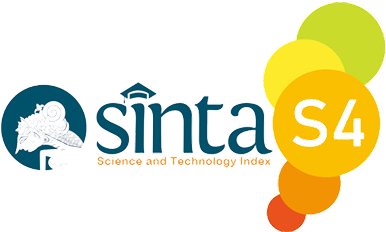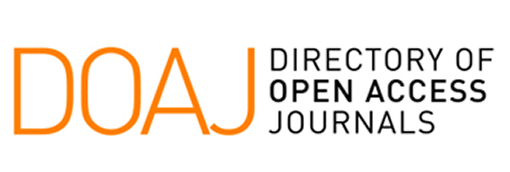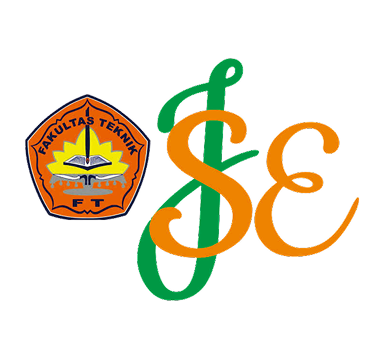Feeding Frequency and Amino Acid Effects on Black Soldier Fly Larvae Performance
Keywords:
Amino Acid, Black Soldier Fly, Feeding Frequency, Organic Waste, ResidueAbstract
The continuous increase in waste generation, driven by population growth, necessitates sustainable waste management solutions. One promising approach is the bioconversion of organic waste using Black Soldier Fly (BSF) larvae, which naturally accelerate the decomposition process. This study investigates the effect of amino acid supplementation and feeding frequency on BSF larval growth, nutrient composition (protein, fat, carbohydrate, moisture, ash), waste reduction, and cultivation efficiency. A total of 700 five-day-old larvae were fed 1.8 g/larva/day using a mixture of restaurant and market waste. Results showed that the addition of 15 mL amino acids did not significantly enhance larval growth, except in fresh waste with a 70:30 ratio over three days, where larvae reached 27 g at 17 days old. Nutrient content varied with waste composition, while feeding frequency had minimal influence. The highest values recorded were moisture (72%) in fresh P100 (1-day feeding), ash (26.29%) in fresh R100 (1-day), protein (46.97%) in fresh 70:30 (3-day), fat (45.11%) in landfill 70:30 (3-day), and carbohydrate (0.15%) in landfill waste. Amino acid addition contributed to increased protein content. Feeding frequency impacted the Waste Reduction Index (WRI), waste reduction rate, and frass C/N ratio. The highest WRI (5.27%) and reduction rate (94.90%) were observed in fresh P100 (1-day feeding), with frass C/N ratios ranging from 13.09 to 28.82. These findings highlight the potential of optimizing feed composition and frequency for enhanced BSF-based organic waste bioconversion.
References
[1] T. Kumari and A. S. Raghubanshi, “Waste management practices in the developing nations: challenges and opportunities,” in Waste Management and Resource Recycling in the Developing World, Elsevier, 2023, pp. 773–797. doi: 10.1016/B978-0-323-90463-6.00017-8.
[2] G. Tchobanoglous, H. Theisen, and S. A. Vigil, Integrated Solid Waste Management: Engineering Principles and Management Issues. McGraw-Hill Companies, 1993.
[3] K. L. SIPSN, “Sistem Informasi Pengelolaan Sampah Nasional.”
[4] I. M. Muhadat, “Kasgot sebagai Alternatif Pupuk Organik Padat pada Tanaman Sawi (Brassica Juncea L) dengan Metode Vertikultur,” Universitas Islam Negri Raden Intan Lampung, Lampung, 2021.
[5] I. M. Musadik and H. Agustin, “Efektivitas Kasgot Sebagai Media Tanam Terhadap Produksi Kailan,” Jurnal Penelitian Pertanian, vol. 25, no. 2, pp. 150–164, 2021.
[6] S. Pintowantoro, Y. Setiyorini, T. Noor Rohmannudin, F. Abdul, and M. Ramadhani, “Pemanfaatan Black Soldier Fly (BSF) untuk Mengolah Sampah Organik di Kota Surabaya,” Sewagati, vol. 6, no. 2, pp. 1–9, Feb. 2022, doi: 10.12962/j26139960.v6i2.129.
[7] R. Andriani et al., “Teknik Kultur Maggot (Hermetia illucens) Pada Kelompok Budidaya Ikan di Kelurahan Kastela,” Altifani: International Journal of Community Engagement, vol. 1, no. 1, Dec. 2020, doi: 10.32502/altifani.v1i1.3003.
[8] L. Monita, S. H. Sutjahjo, A. A. Amin, and M. R. Fahmi, “Pengolahan Sampah Organik Perkotaan Menggunakan Larva Black Soldier Fly (Hermetia illucens),” Jurnal Pengelolaan Sumberdaya Alam dan Lingkungan (Journal of Natural Resources and Environmental Management), vol. 7, no. 3, pp. 227–234, Dec. 2017, doi: 10.29244/jpsl.7.3.227-234.
[9] W. Nirmala, P. Purwaningrum, and D. Indrawati, “Pegaruh Komposisi Sampah Pasar Terhadap Kualitas Kompos Organik dengan Metode Larva Black Soldier Fly (BSF),” Prosiding Seminar Nasional Pakar, Apr. 2020, doi: 10.25105/pakar.v0i0.6807.
[10] P. R. Yaashikaa, P. Senthil Kumar, and S. Varjani, “Valorization of agro-industrial wastes for biorefinery process and circular bioeconomy: A critical review,” Bioresour Technol, vol. 343, p. 126126, Jan. 2022, doi: 10.1016/j.biortech.2021.126126.
[11] Y. Dewilda, R. Aziz, and Mhd. Fauzi, “Kajian Potensi Daur Ulang Sampah Makanan Restoran di Kota Padang,” Jurnal Serambi Engineering, vol. 4, no. 2, Aug. 2019, doi: 10.32672/jse.v4i2.1325.
[12] M. J. Mudarsep, Muh. I. M. R, B. Fatwa, and J. Dawanto, “Pengaruh Pemberian Larutan Asam Amino Berbasis Maggot (BSF) Black Soldier Fly (Hermetia illucens) dengan Variasi Konsentrasi Ke dalam Pakan Terhadap Bobot Badan Akhir Ayam Kampung Unggul Balitnak (KUB),” Jurnal Ilmu dan Teknologi Peternakan Terpadu, vol. 1, no. 2, pp. 15–22, 2021.
[13] G. Gianto, M. Suhandana, and R. M. S. Putri, “Komposisi Kandungan Asam Amino Pada Teripang Emas (Stichoupus horens) di Perairan Pulau Bintan, Kepulauan Riau,” Jurnal FishtecH, vol. 6, no. 2, pp. 186–192, Jul. 2018, doi: 10.36706/fishtech.v6i2.5850.
[14] M. Meneguz et al., “Effect of rearing substrate on growth performance, waste reduction efficiency and chemical composition of black soldier fly (Hermetia illucens) larvae,” J Sci Food Agric, vol. 98, no. 15, pp. 5776–5784, Dec. 2018, doi: 10.1002/jsfa.9127.
[15] R. C. Adams, F. M. Bennett, J. K. Dixon, R. C. Lough, F. S. Maclean, and G. I. Martin, “The utilization of organic wastes in N.Z.,” New Zealand Engineering, vol. 6, no. 11, pp. 396–424, Nov. 1951, [Online]. Available: https://search.informit.org/doi/10.3316/informit.359233295091848
[16] M. M. Seyedalmoosavi, M. Mielenz, T. Veldkamp, G. Daş, and C. C. Metges, “Growth efficiency, intestinal biology, and nutrient utilization and requirements of black soldier fly (Hermetia illucens) larvae compared to monogastric livestock species: a review,” J Anim Sci Biotechnol, vol. 13, no. 1, p. 31, Dec. 2022, doi: 10.1186/s40104-022-00682-7.
[17] T. Veldkamp, K. van Rozen, H. Elissen, P. van Wikselaar, and R. van der Weide, “Bioconversion of digestate, pig manure and vegetal residue‐based waste operated by black soldier fly larvae, hermetia illucens L. (diptera: Stratiomyidae),” Animals, vol. 11, no. 11, Nov. 2021, doi: 10.3390/ani11113082.
[18] A. Lemme and P. Klüber, “Rethinking Amino Acid Nutrition of Black Soldier Fly Larvae (Hermetia illucens) Based on Insights from an Amino Acid Reduction Trial,” Insects, vol. 15, no. 11, p. 862, Nov. 2024, doi: 10.3390/insects15110862.
[19] Y. Putra and A. Ariesmayana, “Efektifitas Penguraian Sampah Organik Menggunakan Maggot (BSF) di Pasar Rau Trade Center,” Jurnal Lingkungan dan Sumberdaya Alam (JURNALIS), vol. 3, no. 1, Jul. 2020, [Online]. Available: https://ejournal.lppm-unbaja.ac.id/index.php/jls/article/view/888
[20] S. Macwan, T. S. P. de Souza, F. R. Dunshea, K. DiGiacomo, and H. A. R. Suleria, “Black soldier fly larvae (Hermetica illucens) as a sustainable source of nutritive and bioactive compounds, and their consumption challenges,” Anim Prod Sci, vol. 64, no. 1, Dec. 2023, doi: 10.1071/AN23192.
[21] S. Lu et al., “Nutritional Composition of Black Soldier Fly Larvae (Hermetia illucens L.) and Its Potential Uses as Alternative Protein Sources in Animal Diets: A Review,” Insects, vol. 13, no. 9, p. 831, Sep. 2022, doi: 10.3390/insects13090831.
[22] N. A. Mohd Yusoff, C. T. Hai, and C. F. Komilus, “Proximate Composition of Larvae, Prepupae and Adult in Black Soldier Fly (Hermetia illucens),” J Agrobiotechnol, vol. 13, no. 1S, pp. 109–117, Oct. 2022, doi: 10.37231/jab.2022.13.1S.320.
[23] X. Liu et al., “Dynamic changes of nutrient composition throughout the entire life cycle of black soldier fly,” PLoS One, vol. 12, no. 8, p. e0182601, Aug. 2017, doi: 10.1371/journal.pone.0182601.
[24] J. Ma et al., “Dynamic Effects of Initial pH of Substrate on Biological Growth and Metamorphosis of Black Soldier Fly (Diptera: Stratiomyidae),” Environ Entomol, vol. 47, no. 1, pp. 159–165, Feb. 2018, doi: 10.1093/ee/nvx186.
[25] N. A. Rohmanna, D. M. Maharani, and Z. A. N. M. Majid, “Analisis pertumbuhan dan kemampuan reduksi limbah larva tentara hitam (Hermetia illucens) pada solid decanter, ampas kelapa, ampas sagu, dan limbah sisa makanan,” Agrointek : Jurnal Teknologi Industri Pertanian, vol. 17, no. 3, pp. 666–673, Jul. 2023, doi: 10.21107/agrointek.v17i3.15598.
[26] R. Yulia and M. Al‘Amani, “Pengaruh Bioaktovator dan Lama Fermentasi Terhadap Kadar Karbon dan Rasio C/N dari Kompos Biji Coklat,” PERISAI: Jurnal Pendidikan dan Riset Ilmu Sains, vol. 2, no. 2, pp. 257–263, Jun. 2023, doi: 10.32672/perisai.v2i2.281.
[27] M.-L. Yang, “Research on the Evaluation Mechanism of the Black Soldier Fly Biological System on Campus,” Sustainability, vol. 14, no. 7, p. 4029, Mar. 2022, doi: 10.3390/su14074029.
[28] N. S. Bekker et al., “Impact of substrate moisture content on growth and metabolic performance of black soldier fly larvae,” Waste Management, vol. 127, pp. 73–79, May 2021, doi: 10.1016/j.wasman.2021.04.028.
[29] T. Liu et al., “Conversion food waste and sawdust into compost employing black soldier fly larvae (diptera: Stratiomyidae) under the optimized condition,” Chemosphere, vol. 272, Jun. 2021, doi: 10.1016/j.chemosphere.2021.129931.
[30] C. Zurbrügg, B. Dortmans, A. Fadhila, B. Vertsappen, and S. Diener, “From pilot to full scale operation of a waste-to-protein treatment facility,” Detritus, vol. 1, no. March, pp. 18–22, Mar. 2018, doi: 10.26403/detritus/2018.22.
[31] M. Gold et al., “Biowaste treatment with black soldier fly larvae: Increasing performance through the formulation of biowastes based on protein and carbohydrates,” Waste Management, vol. 102, pp. 319–329, Feb. 2020, doi: 10.1016/j.wasman.2019.10.036.
[32] S. Zulkifli, A. Jayanegara, B. Pramudya, M. R. Fahmi, and M. Rahmadani, “Alleviation of Selected Environmental Waste through Biodegradation by Black Soldier Fly (Hermetia illucens) Larvae: A Meta-Analysis,” Recycling, vol. 8, no. 6, p. 83, Oct. 2023, doi: 10.3390/recycling8060083.
[33] E. S. Saragi and A. Y. Bagastyo, “Reduction of Organic Solid Waste by Black Soldier FLy Larvae,” The 5th Environmental Technology and Management Conference, 2015, doi: https://dx.doi.org/10.1088/1755-1315/506/1/012005.
[34] D. V. Borisova, G. S. Kostadinova, G. S. Petkov, D. M. Dermendzhieva, and G. G. Beev, “An Assessment of Two Types of Industrially Produced Municipal Green Waste Compost by Quality Control Indices,” Applied Sciences, vol. 12, no. 20, p. 10668, Oct. 2022, doi: 10.3390/app122010668.
Downloads
Published
Issue
Section
License
Copyright (c) 2025 Riang Ursada, Arseto Yekti Bagastyo, Deqi Rizkivia Radita, Anisah Zahira La’ali (Author)

This work is licensed under a Creative Commons Attribution 4.0 International License.












